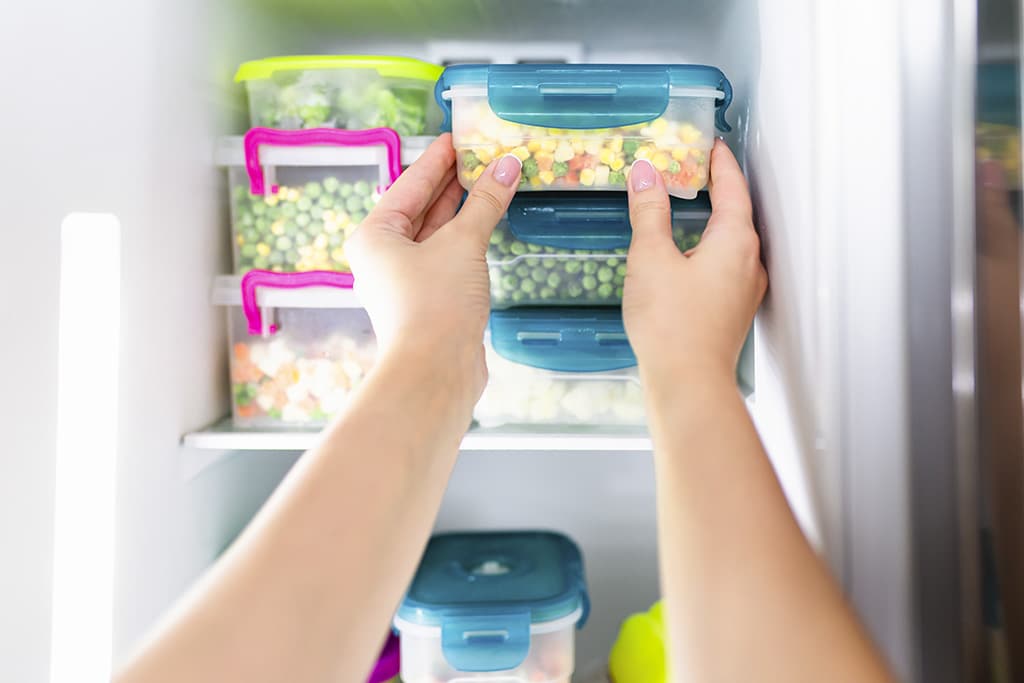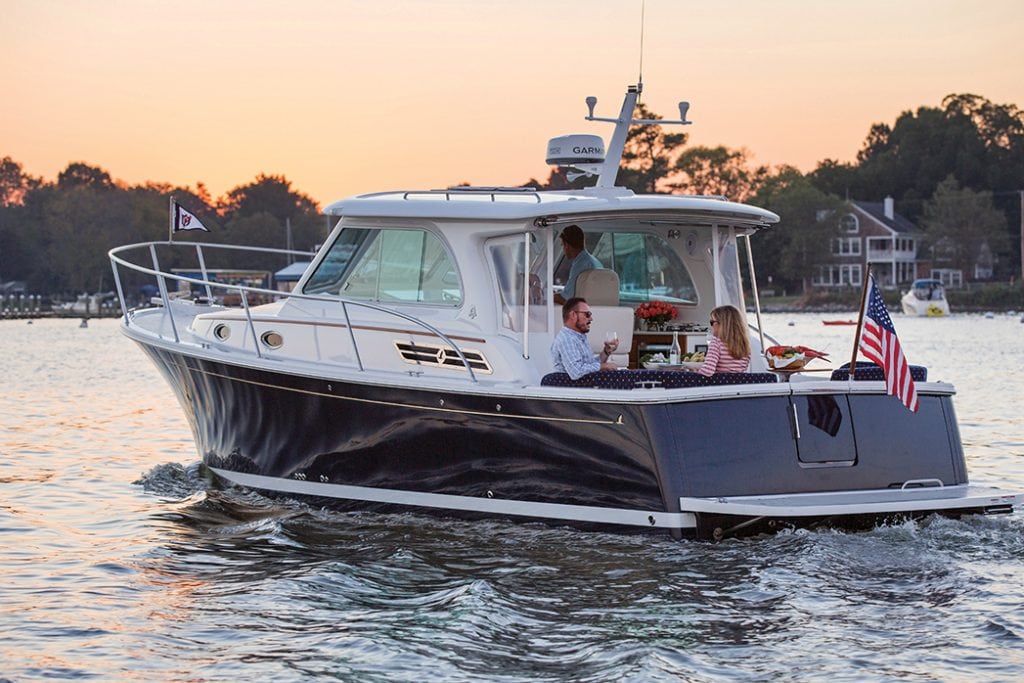Provision Prep
How to keep the food you bring aboard stay fresh and last longer
You are craving a bacon, lettuce, and tomato sandwich while out at anchor, but quickly realize the lettuce has browned and the tomato is mushy. Now what? Bacon and mayo
on toast will have to suffice. Provisioning and safely storing food aboard are, in a way,
art forms, so here are a few tips to make sure you have what you need and that it’s fresh.
Plan and Shop Ahead
Plan menus, make a list, and buy all of the ingredients ahead of time. Purchase items that have a shelf life, including canned goods like soups and vegetables, condiments, and baking and cooking supplies, including oil, flour, sugar, and spices. If you know your basic daily use and consumption of staples during a typical cruise, you can figure out how much of each product to buy and stow to cut down on waste. Carolyn Shearlock, an experienced cruiser and creator of theboatgalley.com, suggests downloading the app AnyList to make a shopping list. It also stores recipes that you can enter manually or import from almost any website.
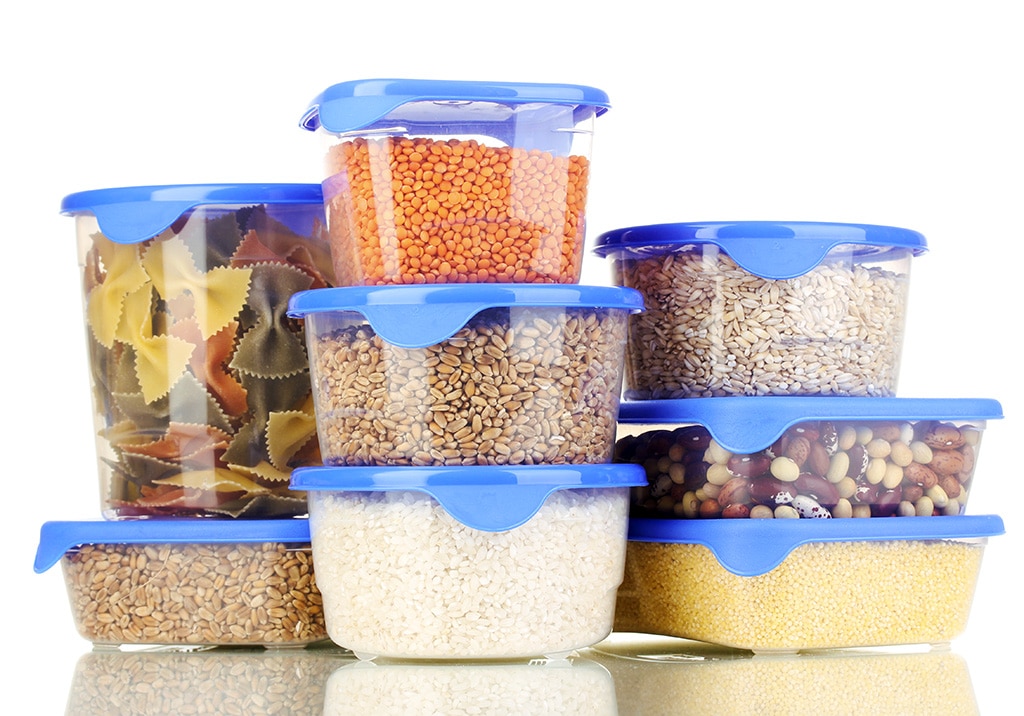
Store It
Storage bins come in various sizes to stock dry items, and ones with lids work well to keep flour, rice, and other grains free from moisture and pests. They are great for organization, too.
“Bins are almost imperative in large, top-loading refrigerators because by using several layers of bins, it’s easy to remove the top ones to quickly get to items below,” says Shearlock. “Bins will also help protect fragile items, such as greens and eggs.”
Label every bin on the top and sides, noting each item and its quantity. For dry storage, check around the boat’s air-conditioned interior for a place to stow your bins that is out of the way but still highly accessible.
When storing flour, rice, and grains, charter chef Darcy Whitney suggests from experience to freeze them for 24 hours prior to packing.
“The tropical climate is prone to bacteria and insects in flour, rice, cereal, and grains,” she says. “Freezing before storing those items kills the small and often nearly invisible insects.
“It’s important after removing from the freezer to discard the packing and store in an airtight container, such as a seal-tight Rubbermaid container.”
On the same note, even though resealable bags are good for storing some items, Whitney points out that if there are insects already on board, they will eat through the plastic for those grains, so use the stronger containers.
“Before getting underway, take a quick look around and make sure nothing is sitting on the counter or anywhere else that could be a problem,” says Shearlock.
Bugs love cardboard. Pour cereal into a small plastic bin, and to keep bugs out of pasta, flour, etc., add a couple of bay leaves in each lidded container.
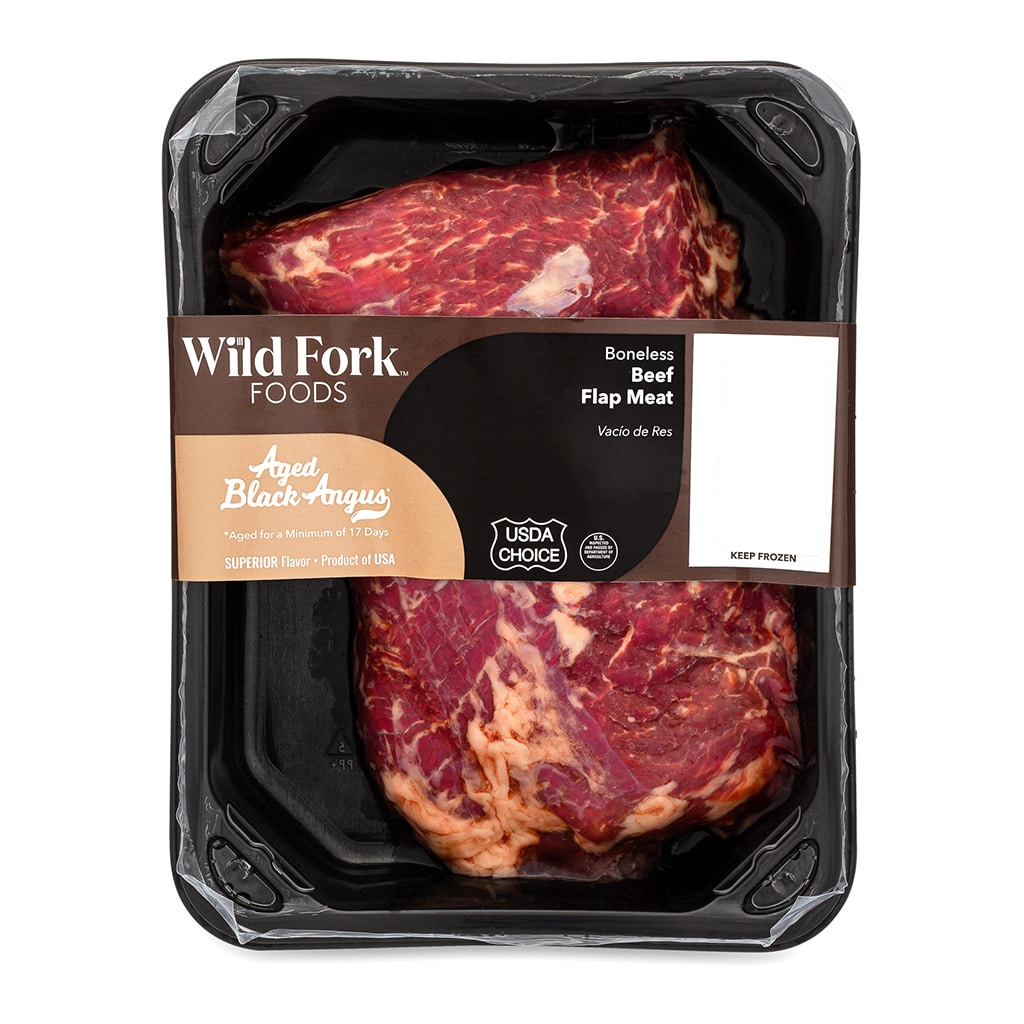
Freeze With Ease
“Small boat refrigerators, particularly front-loading ones, are subject to more temperature fluctuations than larger ones, as there is less cold mass and less cold air overall inside,” says Shearlock. “Therefore, meat, poultry, and seafood are best kept in the freezer. If there is no room or you don’t have one, put them in the coldest part of the refrigerator, which is usually the bottom shelf.”
When freezing meat and fish, separate them into portions. This will create a more tightly packed and energy-efficient freezer as well as allow you to easily take out what you need on a daily basis.
Ensure all products are sealed properly (vacuum-sealing is recommended), and check that the freezer’s temperature is set at or below 0 degrees Fahrenheit. Wild Fork Foods (wildforkfoods.com) is popular for the charter industry (as well as at home) because their meats and seafood are blast-frozen at -40 degrees Fahrenheit at the source to lock in nutrients, minerals, and flavor. The process also reduces freezer crystallization for longer life. It’s recommended to not re-freeze food that has thawed without cooking it first or risk ingesting food-poisoning bacteria.
Be Efficient
How efficient is your refrigerator? Be sure it is set between 32 degrees Fahrenheit and 41 degrees Fahrenheit so food won’t be subjected to bacteria contamination. The more insulation in the fridge, the better, especially in warmer climates.
Like freezers, refrigerator space is minimal so storage should be limited to items that need to be kept cold. Many products found in fridges, such as condiments, don’t need to be there. Check the packaging for storage information.
“The key is to have an organizational plan and always put the same categories of items in the same places,” says Shearlock. “This, in turn, will help you find items quickly and reduce the time the fridge is open, greatly lessening the power required to run it.”
Use a Cooler
If your boat doesn’t have room for both a refrigerator and a freezer, put ice into a large, well-insulated cooler to create a day fridge. Store items you plan to use that day that need to be chilled. If there is still space, put all drinks in the cooler. If not, pour warm drinks into a cup filled with ice.
When in Doubt, Throw it Out
Don’t rely on odor or appearance to determine whether or not food is safe. “Always discard items in the freezer that have come into contact with raw meat juices or have freezer burn,” says Shearlock. Check the expiration dates on your bag/bin labels and on canned goods and toss out anything that is past the date.
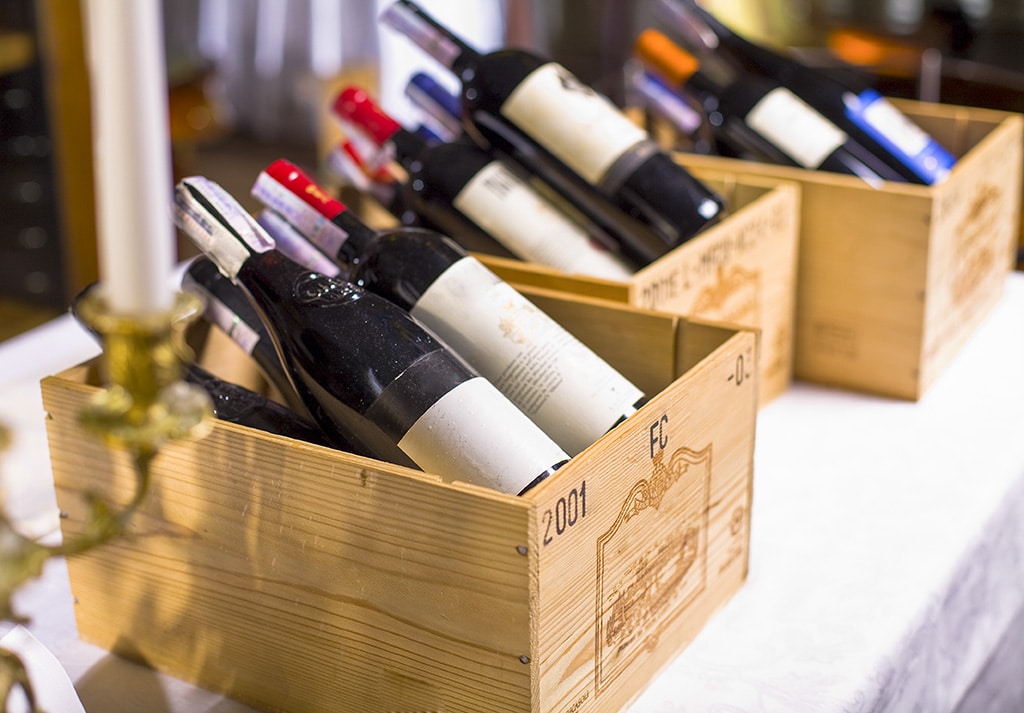
Sundowners at Sundown
Buy beer, wine, and spirits ahead of time, as they are taxed heavily away from the mainland. You will already have them on hand when you want to enjoy a cocktail or two, with or without friends. In addition, consider installing a watermaker on the boat so you don’t have to store cases of plastic water bottles, which are not only cumbersome but also bad for the environment.
-by Bonnie Schultz


